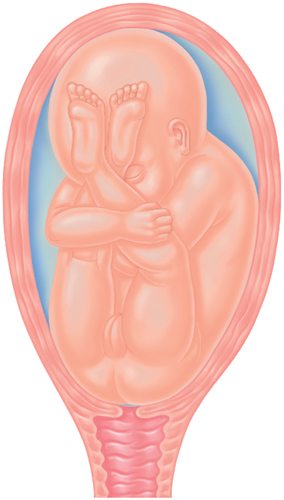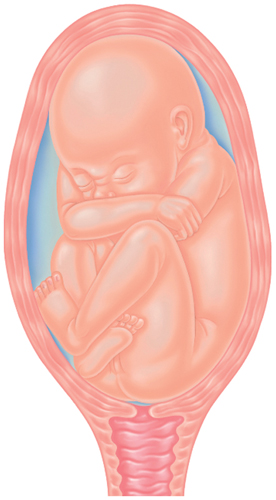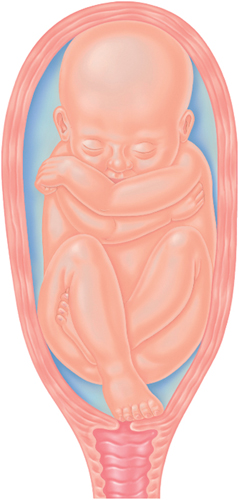Breech Baby
At 32 weeks, 15 percent of babies are breech (bottom first). With time, most turn, with just 3 percent remaining breech at term.
Breech labors and births
are usually more difficult, so if your baby is still in a breech
position in late pregnancy, you may be offered a procedure to turn your
baby .
Turning your baby
The procedure to turn
your baby, external cephalic version (ECV), is usually offered at around
37 weeks if a baby is still in a breech position. The doctor presses on
the lower part of your belly to elevate your baby’s bottom out of the
pelvis. Pressure is used to rotate your baby until he is head down. The
procedure may feel uncomfortable, and you may be given medication to
relax the uterus. A scan is often done before and after the procedure.
The success rate for ECVs
is often over 50 percent. Complications, such as bleeding behind the
placenta and premature rupture of the membranes, are rare. If an ECV is
unsuccessful and you want to try for a vaginal birth, you will be
advised to deliver in a hospital so help can be provided quickly if
needed. In some cases, the position of a breech baby is likely to make
vaginal delivery difficult and a cesarean will be advised.
Breech diagnosed in labor
Occasionally it isn’t
discovered that your baby is in breech until you’re in labor. This
happens because it can be hard to distinguish between a baby’s head and
bottom by feeling your belly alone.
If a breech is diagnosed
in labor, you can still have an ECV but at this stage it has a lower
success rate. An ECV may not be possible in labor if the water has
broken, if you’re in advanced labor, or if there’s no one to do the
procedure.
Delivery of your baby
If you try for a vaginal
birth, you should be in a hospital with an ob/gyn present, since you may
need an assisted delivery or an emergency cesarean. Fetal monitoring
should be done throughout labor, since babies in distress will need to
be delivered by cesarean. Sometimes a breech baby has problems getting
oxygen and blood through the umbilical cord, if it’s squeezed into the
wrong position.
You’ll be advised to
have your baby’s heartbeat monitored throughout labor, and you may have
an IV in case you need a cesarean. You may be asked to lie on your back
with your feet in stirrups so that the doctor can access the baby. An
alternative position is to stand or be on all fours. Your bladder may be
emptied with a catheter and an episiotomy cut may be done to prevent a
more serious tear The doctor may apply gentle pressure to the baby’s arms or legs during
birth, but you’re unlikely to notice this. Except for these differences,
the birth is likely to feel the same as the birth of a head-first baby.
During the birth, the head will be eased out of the birth canal either
by hand or with forceps. to control the speed of the birth, which should
be neither too fast nor too slow.
A cesarean is likely if
complications arise, for example the baby shows signs of distress; the
cord slips below the baby’s bottom; the cervix dilates too slowly; or
the baby isn’t descending.
Positions of a breech baby
A breech baby can lie in one of three positions,
known as extended (frank); flexed (complete); or footling. With an
extended breech, the hips are flexed, knees extended, and the feet are
by the head. A vaginal delivery is most likely with this type of breech.
With a flexed breech, the hips and knees are flexed, with the feet
above the buttocks, and a vaginal birth may be possible. In a footling
breech, the hips are extended with the feet below the buttocks, so a
vaginal delivery is unlikely.
Extended (frank) breech

Flexed (complete) breech

Footling breech
